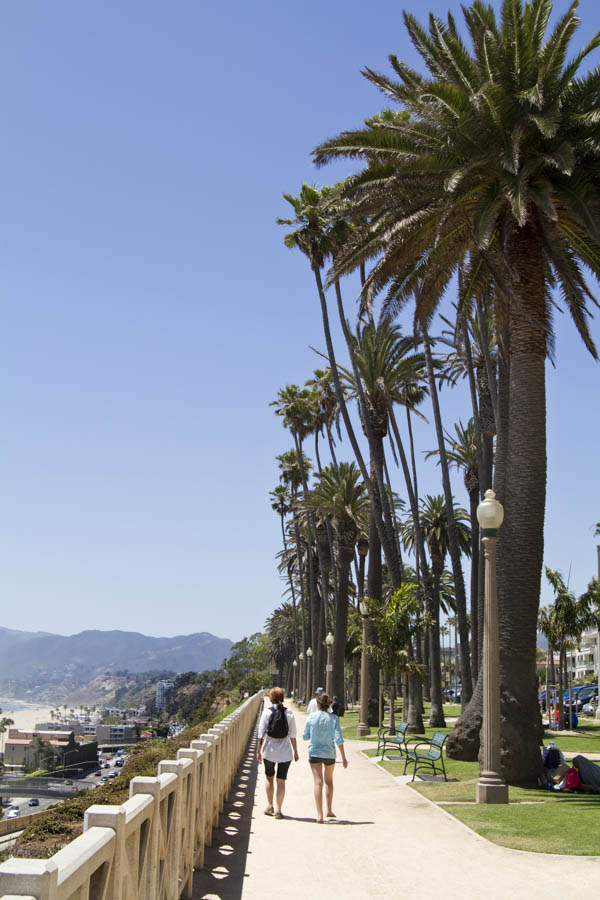Down and Dirty 14: “Summerer” in Southern California’s Coastal Areas (Summerer Part 3)

Down and Dirty Southern California Gardening
A weekly GardenZeus article series to help gardeners succeed in Southern California’s unique climates and growing conditions.
Post 14: “Summerer” in Southern California’s Coastal Areas (Summerer Part 3)
“Summerer” is what I call the extended period of warmer weather in Southern California that often occurs from August through October. See Down and Dirty 12: Summer and “Summerer” for my introduction to the topic.
While summerer is a difficult time of year for gardening in hot inland Southern California, it offers special opportunities in Southern California’s coastal areas (GardenZeus California Climate Zone 15). Don’t know your GardenZeus California Climate Zone? Enter your zipcode at GardenZeus.com.
There are a few caveats to growing vegetables from midsummer through fall in coastal areas. Perhaps the most obvious and challenging is that animal and insect pests tend to be even more abundant and problematic than they are during early spring to early summer. The prior months of warm weather tend to provide ideal reproductive conditions for many insects in coastal areas, and California’s Mediterranean climate with low-rainfall summers tends to result in fewer food sources being available for wildlife, so that almost everything with fur or feathers that roams wild tends to be hungry by late summer.
Garden seedlings, ripening crops, and even mature plants can be rapidly damaged or devastated by deer, rabbits, ground squirrels, gophers, rats, and birds; as well as aphids, slugs, snails, sow bugs, earwigs, and many others. Effective pest prevention or exclusion and rapid response to infestations is often necessary to obtain a good yield.
A second caveat is that while heatwaves can occur any time of year, they are most common in Southern California coastal areas from July through October. This results in a higher risk to plants than in spring for starting seeds, transplanting seedlings, and growing some warm-season crops and most cool season crops. Along with a a higher likelihood of heatwaves, the summerer season also shifts progressively into colder days and nights, which affects growth and yield for some vegetables.
A third caveat is that days become progressively shorter and the sun’s apex progressively lower in the sky after the summer solstice in June. Sunlight in a given planting area may shift, diminsh, or disappear entirely over weeks or months as summer fades and obstructions from the southeast to southwest such as structures, trees, and walls cast longer and longer shade. In some cases, the reverse may be true: an area shaded in midsummer may receive abundant sunlight later in summer or in fall, as with areas under or to the north of tall trees with high canopies and sparse lower foliage and stems. When the sun is almost directly overhead, these areas may be fully shaded, while sunlight may increase as the sun’s daily arc drops lower in the sky.
It’s easy to start a garden during summerer that will lose some or all of its sunlight and underperform starting later summer or fall. It’s best to select a growing area free of obstructions to south, southwest, and/or west if possible. If you’re new to gardening or your current growing area and don’t know which areas will receive enough sunlight to grow vegetables into fall and winter, it may be best to sit out planting this season and instead observe the changes in sunlight and shade in your garden, and keep records to be prepared for planting this time next year.
If you are able to pay daily attention to seedlings and have a growing area that receives full sun in late summer and fall, you can succeed with a new round of warm-season crops starting early summer to midsummer. Seeds can be started indoors throughout the summer, and many crops can be seeded directly outdoors beginning in July and August.
The summerer period in coastal Southern California is suited to growing many bean varieties and short-season cucurbits such as zucchini, summer squash, pickling cucumbers, and short-season melons. Ideally cucurbits for late-summer or early-fall harvest should be planted in June or July.
Cold-tolerant and parthenocarpic tomatoes can be started directly outdoors or transplanted anytime during the summer or during warm fall periods in coastal areas. Recommended varieties include Oregon Spring, Siberian, Stupice, and Siletz. See Grow Tomato Transplants Indoors Starting Late Summer for more information.
Other vegetables that can be grown during summerer in coastal areas include potatoes and heat-tolerant chard. Many herbs perform well in the warm weather of July through early fall in coastal areas including borage, organo, sage, rosemary, lavender, and heat-tolerant thymes.
As daytime high temperatures cool to consistently below 80°F, often between late August and late September, it becomes possible to transplant or seed directly the majority of cool-season vegetables and herbs.
Enter your California zip code for customized advice by plant for many of the above vegetables.
“Down and Dirty Southern California Gardening” is a weekly GardenZeus article series in which expert Darren Butler shares more than 20 years of experience about what works and what doesn’t with gardening in Southern California:
Post 13: Tips for “Summerer” Gardening In Hot Southern-California Areas (Summerer Part 2)
Post 15: Chlorine, Soil, and Watering Gardens (Chlorinated Water, Part 1 of 3)
All articles in this series: Down and Dirty Southern California Gardening
Enter your California zip code for customized advice by plant
